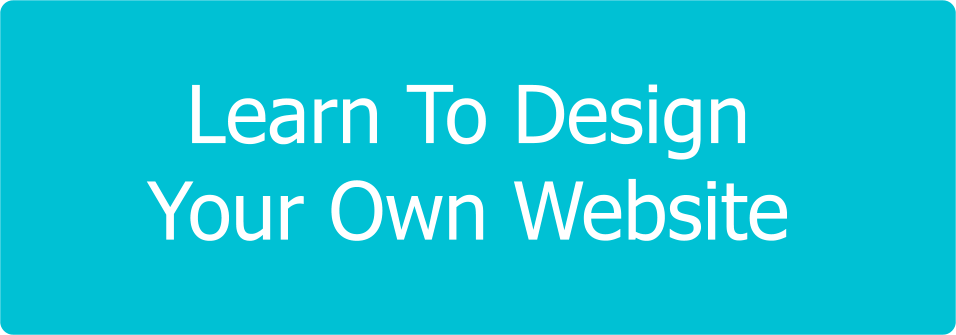How To Use Blogs As a Free Marketing Tool
I admit I stuck my head in the sand when I first heard about Blogs. It was just too hard (so I thought) – another new technology to master and I wasn’t even sure of the benefits, so I ignored them for a while.
Then I attended a marketing seminar where a whole session was devoted to Blogs – how simple they were to set up and use and what unbelievable benefits they provided for a business. And the best part – most of them are free!!!!
So what exactly is a blog?
A blog is basically a journal that is available on the web. The activity of updating a blog is “blogging” and someone who keeps a blog is a “blogger.” Blogs are typically updated daily or weekly using software that allows people with little or no technical background to update and maintain the blog.
Understanding the Power of Blogs in Marketing
In the digital age, where information is at our fingertips, blogs have emerged as a dynamic tool in content marketing. Unlike traditional advertising, blogs offer a more personal and informative approach, creating a connection with your audience.
Consistency is key. By regularly publishing valuable and relevant content, your brand becomes an industry authority. Customers are more likely to trust a business that shares its knowledge and expertise through informative blog posts.
Creating Compelling Content
Identifying Your Audience
Tailor your content to the specific needs and preferences of your target audience. Understanding your readers allows you to create content that resonates and establishes a genuine connection.
Solving Problems
One of the most effective ways to engage readers is by addressing their pain points. Use your blog to provide solutions, tips, and insights that help solve real problems. This not only attracts visitors but keeps them coming back for more.
Other things to share with your readers:
1. Articles
2. Media Releases
3. Industry News
4. Photos of your products or from a tradeshow
5. Surveys – so you can get feedback from your customers
6. Testimonials
7. Instructions on how to use your products/services
8. Product Reviews
9. Interviews
10. Case Studies
11. Business and Employee Profiles
12. Links to complementary businesses
13. Frequently Asked Questions and Problem Resolutions
14. Inspirational Quotes
15. Research Findings
SEO Benefits of Blogging
Keywords and Rankings
Incorporate relevant keywords naturally into your blog content to improve search engine rankings. This makes it easier for potential customers to find your business when searching for related products or services.
Frequent Updates
Search engines love fresh content. Regularly updating your blog keeps your website current, signaling to search engines that your site is active and relevant.
Social Media Amplification
Content Sharing
Blogs are highly shareable on social media. Share your blog posts across various platforms to expand your reach and drive traffic back to your website.
Community Engagement
Encourage social media interactions sparked by your blog content. Respond to comments, ask questions, and build a community around your brand. This not only boosts engagement but also enhances brand loyalty.
Establishing Authority and Expertise
Thought Leadership
Position your business as a thought leader in your industry by sharing insightful and informative content. This not only attracts potential customers but also establishes trust and credibility.
Showcasing Success Stories
Share success stories and case studies through your blog. This not only provides social proof but also showcases the real-world impact of your products or services.
Building Relationships with Your Audience
Interactive Elements
Encourage reader engagement by allowing comments on your blog posts. Foster a sense of community and make your audience feel heard and valued.
Email Subscriptions
Use your blog to grow your email subscriber list. Offering valuable content is a great incentive for visitors to subscribe, allowing you to nurture leads through targeted email marketing.
Analytics and Measurement
Tracking Success
Monitor your blog analytics to gain insights into what works and what doesn’t. Track metrics such as page views, engagement, and conversion rates to refine your strategy.
Adapting Strategies
Use data-driven insights to adapt your blogging strategy. Identify popular topics, preferred content formats, and optimal posting times to maximize your impact.
Getting Started
Selecting the right platform is essential. WordPress, Blogger, and Medium are popular choices. WordPress, in particular, offers a user-friendly interface and a plethora of customizable options. Ensure the platform aligns with your technical skills and business needs.
If you need help setting up a website or a blog, contact us and we’ll be happy to help.
Promote Your Blog
Promote your blog through various channels. Share your posts on social media, email newsletters, and relevant forums. Engage with your audience by responding to comments and encouraging social sharing. Cross-promote with other businesses or influencers in your industry.
Capture Leads
Integrate lead capture mechanisms on your blog. Encourage readers to subscribe to your email list for updates, newsletters, or exclusive content. Building a subscriber base enables you to nurture leads and maintain a direct line of communication with your audience.
Examples of How Businesses Can Blogs for Marketing
1. Health and Wellness:
For businesses in health and wellness, such as fitness studios, nutritionists, or wellness clinics, blogging can be a powerful tool to connect with a health-conscious audience.
Blog Content Ideas:
- Workout Guides: Share weekly or monthly workout routines suitable for different fitness levels.
- Nutrition Tips: Provide articles on healthy eating habits, recipes, and nutritional advice.
- Client Success Stories: Feature real-life success stories from clients who have achieved their health and fitness goals.
Marketing Strategy: Use the blog to establish your business as an authority in health and wellness. Share expert insights, promote your services, and engage with your audience through comments and social media.
2. Technology and Software:
For technology and software companies, blogging can serve as a platform to showcase expertise, announce product updates, and provide valuable information to users.
Blog Content Ideas:
- Product Tutorials: Create step-by-step guides on how to use specific features of your software.
- Industry Trends: Share insights on the latest technology trends and their impact on businesses.
- Customer Support FAQs: Address common user queries through informative blog posts.
Marketing Strategy: Position your company as an industry leader by sharing cutting-edge information and addressing user concerns. Optimize blog content for relevant keywords to enhance SEO and attract a broader audience.
3. Fashion and Lifestyle:
Fashion and lifestyle businesses, such as clothing brands or beauty salons, can use blogs to showcase their products, offer style tips, and engage with their audience on a personal level.
Blog Content Ideas:
- Seasonal Fashion Guides: Showcase new collections and provide style inspiration for different seasons.
- Behind-the-Scenes: Take readers behind the scenes of photo shoots or product development.
- Beauty Tips and Trends: Share beauty hacks, makeup tutorials, and discuss emerging beauty trends.
Marketing Strategy: Create visually appealing content that aligns with your brand image. Encourage user-generated content by featuring customer photos and testimonials. Use the blog to drive traffic to your e-commerce site through exclusive promotions and discounts.
4. Financial Services:
Industry Overview: Financial service providers, such as banks or investment firms, can use blogs to demystify complex financial topics, provide advice, and build trust with their audience.
Blog Content Ideas:
- Financial Planning Guides: Offer step-by-step guides on creating a financial plan.
- Market Insights: Provide analyses of market trends, investment opportunities, and economic forecasts.
- Client Success Stories: Share stories of clients who have achieved financial success with your services.
Marketing Strategy: Use the blog to establish credibility by providing valuable financial insights. Foster a sense of trust by addressing common financial concerns and positioning your business as a reliable source of financial information.
5. Travel and Hospitality:
Industry Overview: For businesses in travel and hospitality, such as hotels, travel agencies, or tour operators, blogging can be a powerful way to showcase destinations, share travel tips, and connect with adventure-seeking audiences.
Blog Content Ideas:
- Destination Guides: Create comprehensive guides for popular travel destinations.
- Travel Itineraries: Suggest itineraries for different types of travellers, such as families, solo adventurers, or luxury seekers.
- Customer Travel Stories: Feature travel experiences and photos from your customers.
Marketing Strategy: Position your business as a go-to resource for travel information. Engage with your audience by encouraging them to share their travel stories. Use the blog to promote travel packages, exclusive deals, and seasonal promotions.
Starting a business blog is an exciting venture that can significantly impact your brand’s online presence. By defining your goals, understanding your audience, and consistently delivering valuable content, you’ll establish a compelling online presence and connect with your target market. Remember, success in blogging is a journey, not a destination – so stay committed, adapt to your audience’s needs, and watch your business flourish in the digital landscape.
*****
by Ivana Katz
Websites 4 Small Business – www.web4business.com.au; Learn to Design – www.learntodesign.com.au/
Ivana makes it easy for you to get your business online very quickly. If you’re looking for a professional and affordable website designer, CLICK HERE and download your FREE copy of “Ultimate Website Design Secrets Blackbook – 10 Bulletproof Strategies for Designing an Outrageously Successful Website”
















